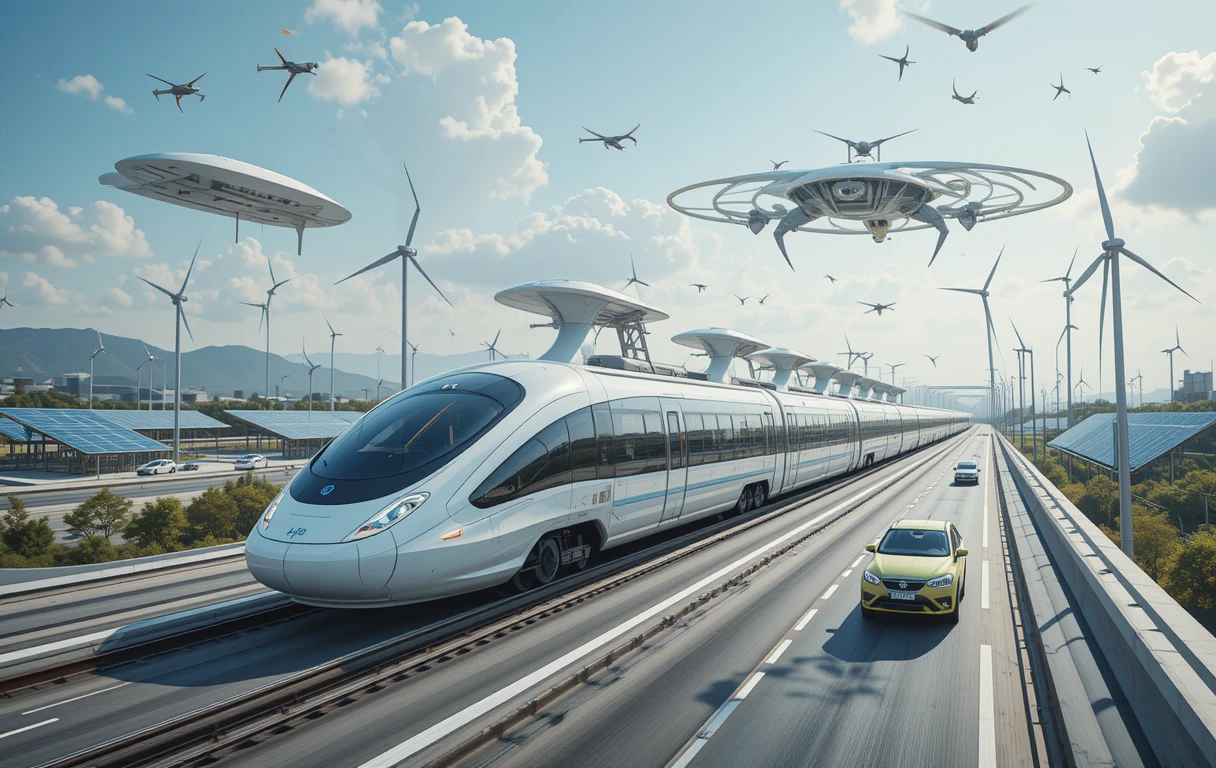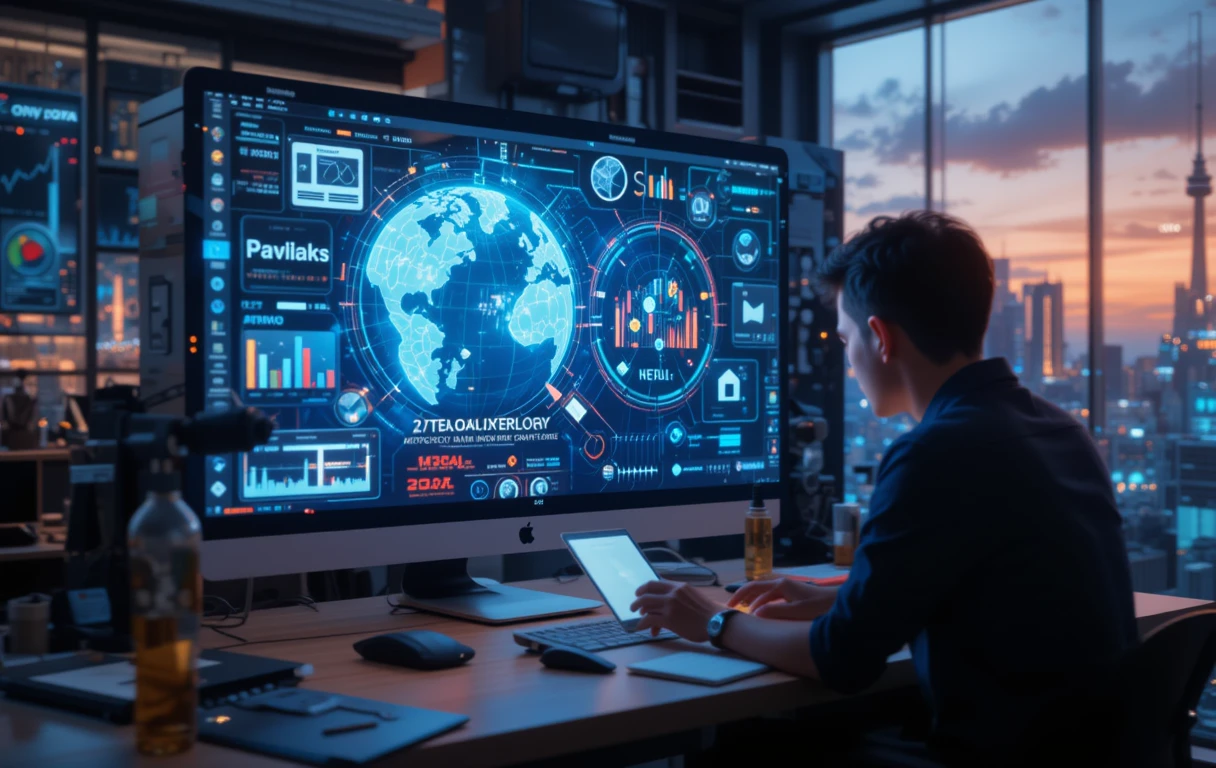In the ever-evolving world of transportation, the next decade promises groundbreaking advancements that will redefine how we move. From flying cars to lightning-fast hyperloops, the future of transportation is no longer a distant dream—it’s arriving sooner than we think. With sustainability, efficiency, and convenience taking center stage, these innovations aren’t just technological marvels; they’re solutions to global challenges like urban congestion, climate change, and the need for faster travel. In this blog, we’ll explore five jaw-dropping innovations in transportation you’ll see by 2030, along with the transformative impact they’re set to deliver.
Autonomous Vehicles: The Era of Self-Driving Cars
Autonomous vehicles (AVs) are no longer science fiction. Companies like Tesla, Waymo, and GM are already testing fully self-driving cars, and by 2030, these vehicles are expected to become mainstream. Imagine sitting back and reading a book or even catching up on emails while your car safely navigates congested city streets.
Self-driving cars use a combination of artificial intelligence (AI), LiDAR sensors, and GPS systems to interpret their surroundings and make real-time decisions. The benefits? Reduced road accidents caused by human error, smoother traffic flow, and improved accessibility for those unable to drive, such as the elderly or disabled.
While some concerns remain around regulations and cybersecurity, the widespread adoption of autonomous vehicles could reshape cities, reducing the need for parking spaces and making urban areas more pedestrian-friendly.
The Hyperloop Revolution: High-Speed Travel Like Never Before
Hyperloop technology, spearheaded by companies like Virgin Hyperloop and Elon Musk’s The Boring Company, is set to redefine long-distance travel. This futuristic mode of transportation uses pods that travel through low-pressure vacuum tubes at speeds of up to 760 mph—faster than a commercial jet.
By 2030, hyperloop systems could connect major cities, making travel between them faster, cheaper, and greener. For instance, a journey from Los Angeles to San Francisco could take just 30 minutes instead of six hours by car. This innovation isn’t just about speed; it’s about sustainability. Hyperloop systems are designed to use renewable energy sources, minimizing carbon footprints compared to airplanes or trains.
The potential here is enormous. Imagine a world where international commutes and weekend getaways are effortless, cost-effective, and eco-friendly.
Flying Cars: From Sci-Fi to Reality
If you thought flying cars were something straight out of a Hollywood blockbuster, think again. By 2030, flying cars—or eVTOLs (electric vertical takeoff and landing vehicles)—are expected to become a reality. Companies like Joby Aviation, Uber Elevate, and Lilium are pioneering this transformative technology, with several prototypes already in testing phases.
The primary advantage of flying cars? Time-saving convenience. Imagine soaring over gridlocked city streets and arriving at your destination in minutes. While regulatory and safety concerns still need to be addressed, the future looks bright (and airborne).
The primary advantage of flying cars? Time-saving convenience. Imagine soaring over gridlocked city streets and arriving at your destination in minutes. While regulatory and safety concerns still need to be addressed, the future looks bright (and airborne).
Maglev Trains: Speed and Comfort on the Tracks
Maglev (magnetic levitation) trains are set to become the backbone of high-speed rail travel by 2030. Unlike traditional trains, maglev systems use powerful magnets to lift and propel the train above the tracks, eliminating friction and allowing for speeds of up to 375 mph.
Countries like Japan and China are already leading the way with operational maglev routes. For example, the Shanghai Maglev Train reaches speeds of 268 mph, and Japan’s Chuo Shinkansen is expected to hit 311 mph when it becomes operational.
By reducing travel times and offering unparalleled comfort, maglev trains will provide a viable alternative to air travel, especially for domestic and regional routes. Additionally, these trains are quieter and produce fewer emissions, aligning with global sustainability goals.
Drones for Last-Mile Delivery: Redefining Logistics
While drones have been around for years, their role in transportation and logistics is set to skyrocket by 2030. Companies like Amazon, Walmart, and Zipline are already exploring the use of delivery drones to fulfill last-mile logistics, reducing the need for trucks and vans in congested urban areas.
Drones offer unmatched speed and efficiency. Imagine receiving your package just 15 minutes after placing an online order. In addition to consumer deliveries, drones are also being used for medical supply transport, especially in remote areas where access to critical resources is limited.
However, for drones to become a ubiquitous mode of delivery, regulations surrounding airspace, safety, and privacy need to evolve. By addressing these challenges, drones could become a game-changer in modern transportation systems.
How These Innovations Will Transform Our Lives
The transportation landscape in 2030 will look drastically different from what we know today. These innovations—autonomous vehicles, hyperloop systems, flying cars, maglev trains, and delivery drones—will make travel faster, greener, and more efficient. Beyond the technology, they also address some of humanity’s most pressing challenges, such as reducing carbon emissions, saving time, and increasing accessibility.
As these advancements inch closer to reality, it’s an exciting time to rethink how we interact with the world around us. The future of transportation isn’t just about getting from point A to point B—it’s about transforming the journey itself.
Conclusion
The world of transportation is on the brink of a revolution. By 2030, incredible innovations like autonomous vehicles, hyperloop systems, flying cars, maglev trains, and drones will reshape how we travel, work, and live. These advancements aren’t just about faster or smarter travel—they’re about creating a more sustainable and connected future.
As we move into this exciting era, one thing is clear: the future of transportation is bright, transformative, and just around the corner. Buckle up—2030 is going to be an incredible ride!




